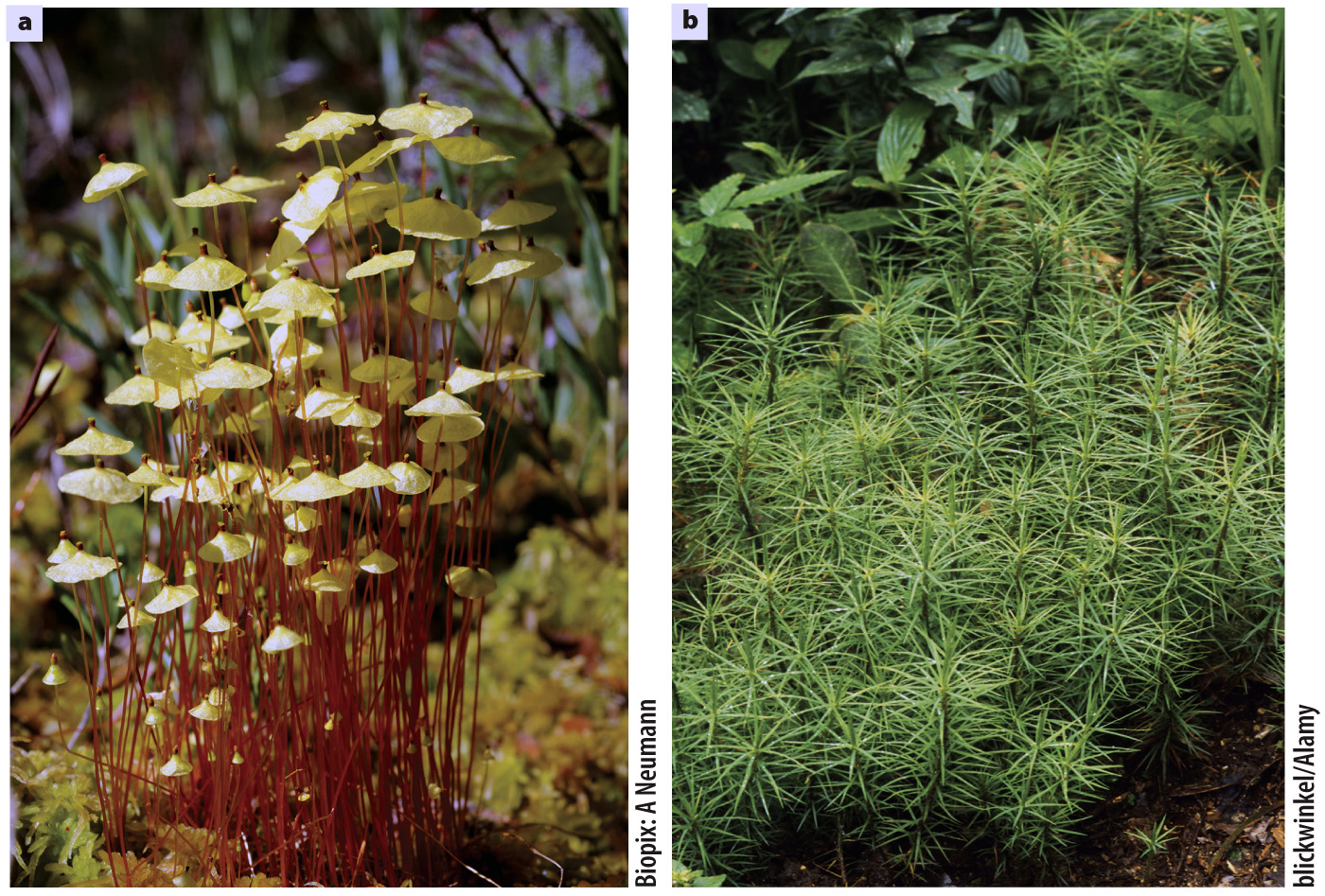Bryophytes exhibit several cases of convergent evolution with the vascular plants.
Bryophytes are interesting partly because they are so different from the more familiar vascular plants. However, given that they have long evolved in parallel with vascular plants, it is not surprising that bryophytes have evolved similar solutions to environmental challenges, a process referred to as convergent evolution (Chapter 23). For example, some mosses depend on insects to transport their spores (Fig. 33.4a). The brightly colored sporangia of these mosses emit volatile chemicals that mimic compounds released by rotting flesh or herbivore dung. Attracted by these chemicals, insects land on the sporangia, and their legs become covered with spores. When the insect subsequently lands on a real pile of dung, some of the spores fall off into what is, for them, an ideal site for supporting the growth of a new gametophyte.

Another example of convergent evolution is the presence of cells specialized for the transport of water and carbohydrates in some of the largest bryophytes (Fig 33.4b). The structure of these cells indicates that they evolved independently from the xylem and phloem of vascular plants. In particular, the water-
Stomata are present on the sporophytes of some mosses and hornworts, particularly in regions where a waxy cuticle also develops. As discussed in Chapter 29, stomata are pores in the epidermis of vascular plants that open and close, providing an active means of controlling water loss. Bryophyte stomata may play an additional role: A sporophyte with open stomata will dry out quickly, so its spores are more easily released into the air. Further study is needed to determine if these stomata are the result of convergent evolution.
Quick Check 2 If the stomata of bryophytes and of vascular plants are not an example of convergent evolution, what is an alternative explanation for their appearance in these groups?
Quick Check 2 Answer
An alternative explanation is that stomata evolved once, in the common ancestor of mosses, hornworts, and vascular plants.